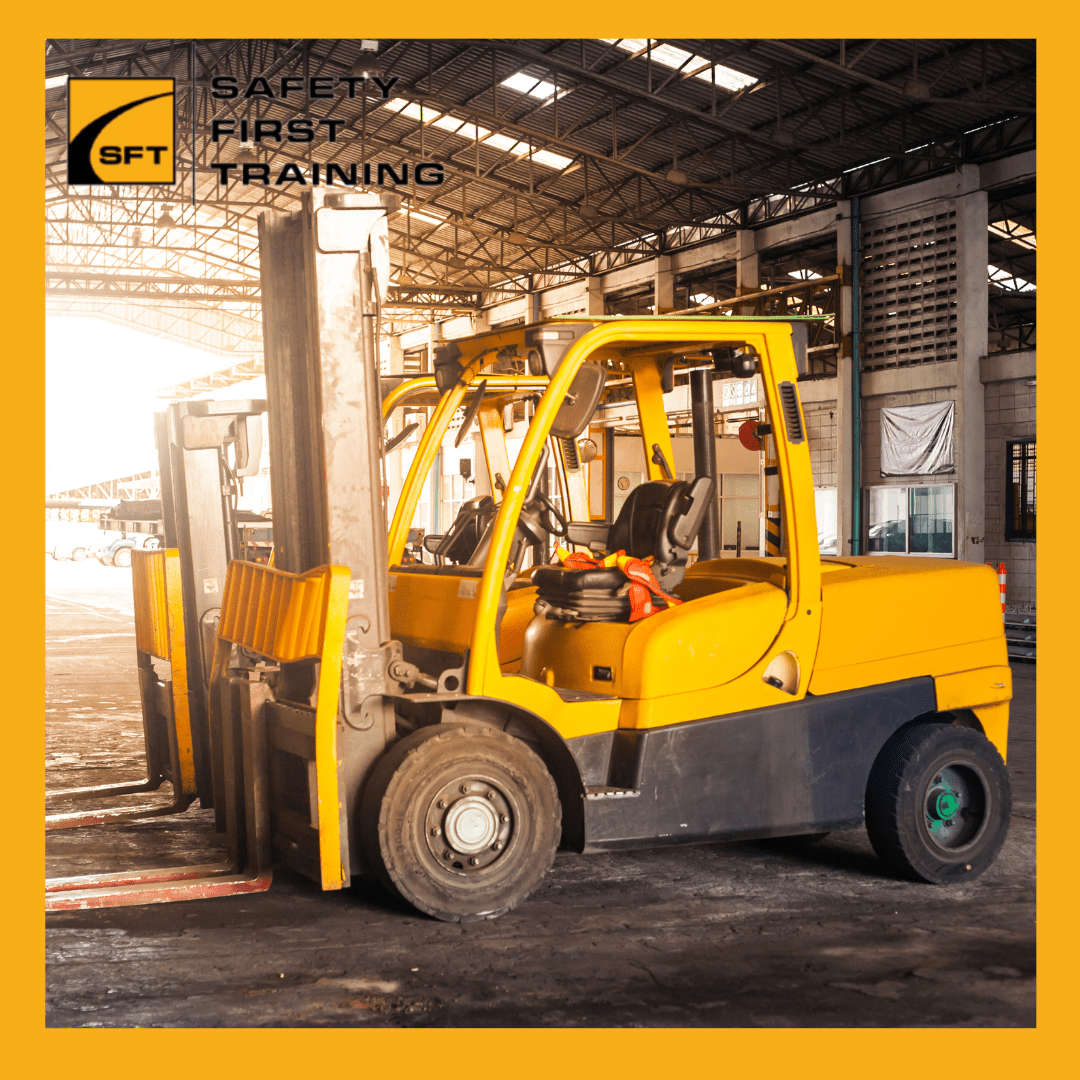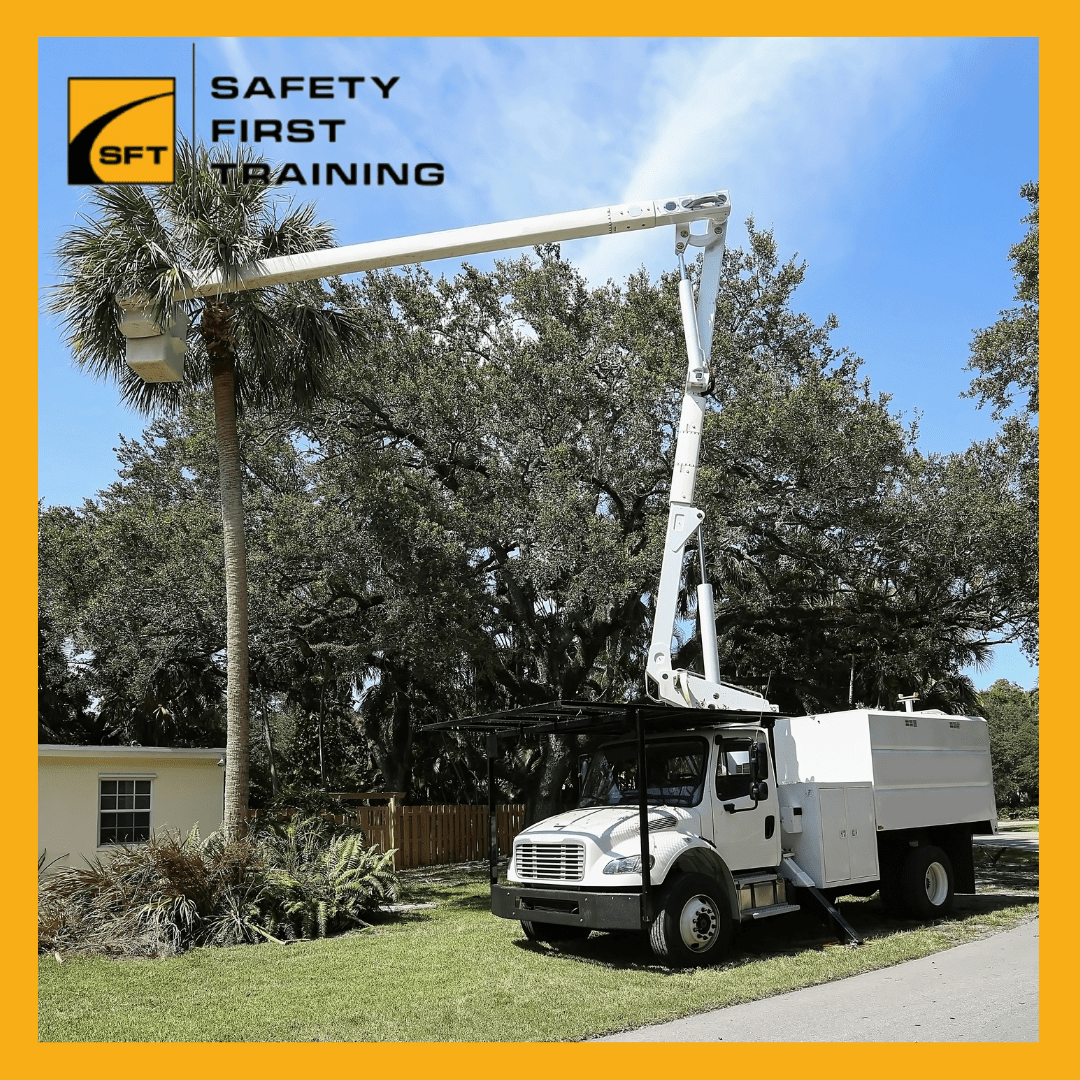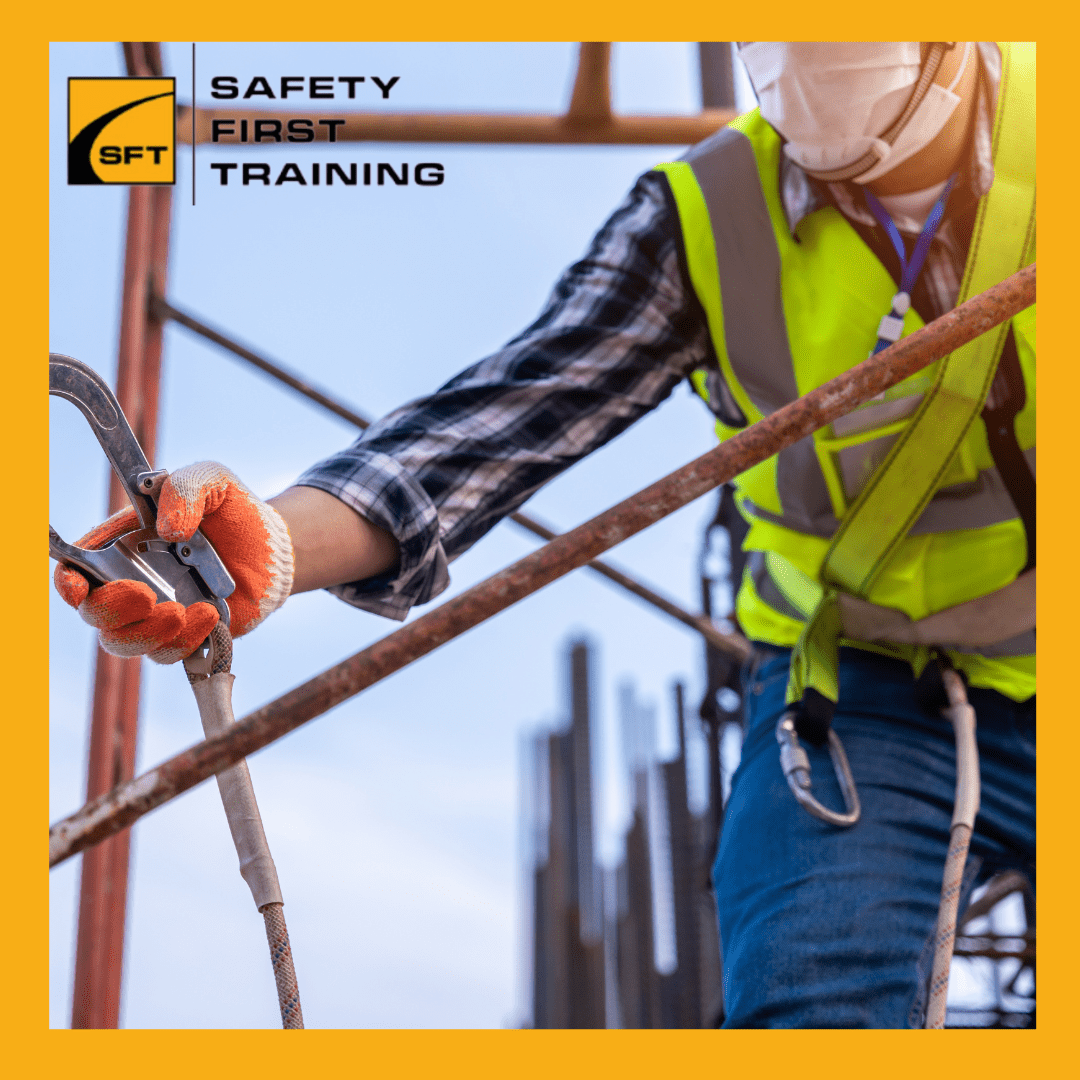COUNTERBALANCE FORKLIFT TRAINING CERTIFICATION - SAFE OPERATION
The Forklift Training courses from Safety First Training are OHSA based programs that teach pre-operation forklift inspection, safe operation requirements, proper forklift load handling, operating and moving the machine and hazard avoidance. We also offer 4 Dimensional Forklift (Combilift) Training. Training is offered throughout Ontario including Toronto, Mississauga, Brampton, Markham, Vaughan, Richmond Hill, Oakville, Burlington, Hamilton, Pickering, Ajax, Whitby, Oshawa, Milton, Georgetown, Aurora, Newmarket, Caledon, Barrie, Guelph, Kitchener, Waterloo, Cambridge, St. Catharines, Niagara Falls, Peterborough, Orangeville, Grimsby, Brantford, Stratford, Simcoe, Woodstock, Collingwood, Orillia, Port Hope, Kawartha Lakes, and more.
Counterbalance Forklift Training Pricing - Special Discounts and Preferred Pricing Offered, Contact Us Directly
Counterbalance Forklift: Experienced Operator 3 – 5 hours
1-3 Participants: $619.00/Session
4-5 Participants: $859.00/Session
6-10 Participants: $1,329.00/Session
Counterbalance Forklift: New Operator 5 – 8 hours
1-3 Participants: $799.00/Session
4-5 Participants: $1,099.00/Session
6-10 Participants: $1,539.00/Session
Mixed Experienced Classes are also offered
Add: Counterbalance Forklift Annual Inspection: $250 / Equipment
Want to take the Online course instead?
Duration
Up to 8 hours depending on participants' experience levels
Assessment
A passing grade of 75% is required in order to receive a certificate
Completion
Upon successful completion of this course, participants will receive a PDF wall certificate and PDF wallet card for their records
This Counterbalance Forklift Training course is designed using parameters set out by:
• CSA Standard B335-15 - The CSA Safety Standard for Lift Trucks (B335-15) identifies the knowledge, practical skills and evaluation requirements needed by lift truck operators. The practical evaluation of the forklift operator training course requires operators to demonstrate competency skill level equal or greater to the industry accepted measurements.
• The Occupational Health and Safety Act, REGULATION 851. INDUSTRIAL ESTABLISHMENTS as it pertains to lift truck safety.
Counterbalance Forklift Training Course Outline:
• Course Introduction
• Related Government legislation
• Forklift Training Certification Safety Video
• Responsibilities of the workers, supervisors and employers
• Identify various types of lift trucks
• Pre-operational checks
• Inspection, maintenance, and records
• Lift capacity and load limitations
• Fuel safety for both electric and propane equipment
• Safe operating procedures
Counterbalance forklifts are a common type of forklift used in warehouses, construction sites, and other industrial settings. They are designed to carry heavy loads and are equipped with a large, counterbalanced weight at the back of the vehicle to help balance the weight of the load. Due to their size and weight, operating a counterbalance forklift can be dangerous if proper training is not provided.
In Ontario, counterbalance forklift training is essential for several reasons:
Compliance with Regulations: Ontario's Occupational Health and Safety Act requires employers to provide training and instruction to workers who operate industrial vehicles, including counterbalance forklifts. Failure to comply with these regulations can result in fines, penalties, and legal liability.
Improved Safety: Proper training ensures that operators understand the proper procedures for operating a counterbalance forklift safely. This includes understanding load limits, how to properly load and unload the forklift, and how to maneuver the vehicle safely in different environments. With this knowledge, operators can avoid accidents and injuries.
Increased Productivity: Proper training can also help to increase productivity. Skilled operators can work more efficiently and safely, reducing the risk of damage to equipment and products, and minimizing downtime due to accidents or injuries.
Reduced Costs: By investing in counterbalance forklift training, employers can reduce costs associated with accidents, injuries, and equipment damage. This can help to improve the bottom line and enhance worksite safety and productivity.
Overall, counterbalance forklift training is essential in Ontario to ensure compliance with regulations, improve safety, increase productivity, and reduce costs. Employers should prioritize providing their workers with the necessary training to operate these powerful machines safely and efficiently.
Train the Trainer – Counterbalance Forklift
Our professional Train the Trainer certification course for Counterbalance Forklift allow our clients to learn how to teach OHSA based courses directly to their employees. When individuals or groups of employees need safety training, these train the trainer programs can be more cost effective than hiring outside training companies. We will train you to be an effective Counterbalance Forklift safety trainer for your company.
Our Train the Trainer Course Package include:
Professional Teaching Guide
Participant Course Handout
Evaluation Forms
Wall Certificate template
Instructor Course Presentation
Course Test and Answer Key
Course Video Supplement
Wallet Card template
Counterbalance Forklift Training: Load Lifting Tips
Operating a forklift may seem like an easy, simple thing to do, but if not done properly, significant injuries and damage can occur. If you are not properly trained to operate a forklift, you are exposing yourself and others to significant and unnecessary risk.
Below are some helpful tips that you should always be aware of before you operate a forklift:
Confirm that the load you are picking up is within the capacity rating of the machine you are operating.
If unsure of the weight of the load you are picking up, you must consult a supervisor to confirm.
Confirm the weight on the pallet is evenly distributed. If it isn’t, the pallet load must be re-positioned before lifting with the forklift.
If you must lift a load that is unbalanced, always make sure that the heaviest end is against the heel of the forks.
Always check the condition of the pallet before lifting it. A pallet in poor condition can cause the load to collapse. If you see a damaged pallet, remove the load and reload it on a different pallet, then remove the damaged pallet from service.
If you are moving bagged goods by pallet, the bags must be cross stacked and stepped, if not, the load will more than likely fall off the pallet during lifting or transport.
If you have a large load that prevents you from seeing your direction of travel, you must travel in reverse and/or have another person guiding you for the entire time of travel.
Always think about the end destination of your load before you pick it up. Sometimes a convenient load position for pickup may not be a convenient position at the end destination.
Do not attempt to lift or carry more than one loaded pallet at a time.
Always use a load backrest extension when you are required to lift or carry loads that are higher than normal.
Confirm that the front forks are opened wide enough to ensure load stability and that here is enough room under the load to allow forks to be pushed underneath.
Forklift Facts:
Counterbalance Forklift (Electric or Propane)
Two types of Counterbalances, Electric and Propane
Counterbalances are also commonly referred to as “forklift” or “lift truck”
There are attachments that can be used to make your work easier, but you do need to be trained on how to use them
Narrow Aisle Reach
Has a “deadman” pedal for easy breaking
Depending on the make, a narrow aisle reach can carry up to 4500 lbs
Depending on the make, a narrow aisle reach can go as high as 30.5 feet up
Swing Reach
Requires different training from the Narrow Aisle Reach in order to operate it
Designed to maximize storage density
Depending on the make you can get tripe your storage capacity using a swing reach
Dock Stocker
Commonly referred to as a Reach Truck but the two have different operating systems
Made in two versions, a sit down and a stand up
Some models have an increased load capacity of 3000 to 5000 lbs.
Walkie/Walkie Rider
Also known as a pallet jack
Easy to maneuver and quick to respond to commands
Great for low level order picking
Order Picker
Order pickers are used to make the picking process as easy as possible for the operator
There are 3 different levels of order pickers: low, medium and high
Order pickers are sometimes referred to as a cherry picker
High Capacity Forklift
Depending on the model, lifting capacities range from 19000 to 105821 lbs
Different front end carriages available
A high capacity forklift makes light work of a heavy load
Zoom Boom
Designed for outdoor use in rough terrain
Depending on the make, the lift capacity is anywhere from 3000 lbs to 46000 lbs
Can also be used with attachments
Safety - Always!
Always….
Work in compliance with your provincial Occupational Health and Safety Regulations
Read and follow your employer’s procedures for Health and Safety
Read and follow any equipment Operator’s and Manufacturer’s Manual
Wear proper Personal Protective Equipment (PPE)
Adhere to equipment lifting capacity information and warning signs
Conduct pre-shift inspections, pre-start up inspections, visual inspections
Report the absence or defect in any equipment or protective device
Test all equipment functions to ensure proper working condition
Avoid hazardous situations, steep slopes, grades and drop offs
Use the equipment for what is was intended and designed for
Ensure you are properly trained and authorized to use the equipment
8 Simple Safety Rules for safe operation of a Forklift
If you have any questions regarding this forklift training certification course for your employees, please contact us, we can help. [email protected]




